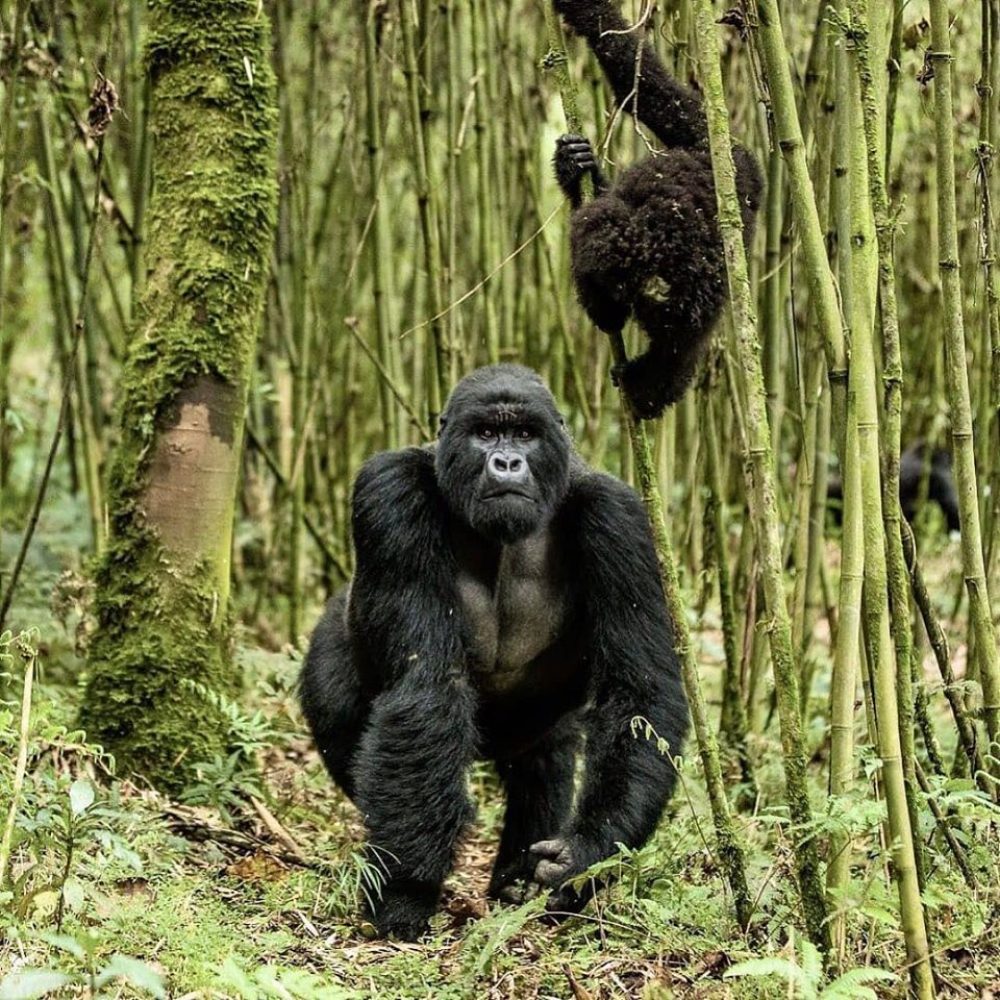 Scientifically referred to as Naja Arabica, the Egyptian Cobra is one of the largest cobra species that is native to various parts of Africa including Uganda where it is encountered on Uganda tours.
Scientifically referred to as Naja Arabica, the Egyptian Cobra is one of the largest cobra species that is native to various parts of Africa including Uganda where it is encountered on Uganda tours.
The Egyptian Cobra is marked by large depressed head which is slightly separated from the neck while the neck features long cervical ribs that provides for expansion. The snout is broad and rounded while the eyes are big marked with round pupils as often explored on Safari in Uganda. The Egyptian Cobra features stout and cylindrical body along with a long tail and the average length is 1 – 2m with 3m being the maximum.
Regarding distribution, the Egyptian Cobra is spread in the areas of North Africa, West Africa Savannah, the south of Congo basin and the savannah and semi arid landscapes of East Africa including countries of Uganda, Kenya and Tanzania where world travellers on Combined East Africa Safari tours have chances of exploring it.
Its habitats are diverse but include dry to moist savannahs, steppes and semi-desert landscapes. The Egyptian Cobras are terrestrial and nocturnal but they can at times be encountered basking in the sun especially in the mid-morning. They consume mainly toads but can as well take in birds, small mammals, lizards and eggs.
Egyptian Cobra can release 175 – 300mg of venom on a single bite which affects the nervous system halting the transmission of nerve signals to muscles and later the lungs and heart resulting into loss of life.
Regarding conservation, the Egyptian Cobras are listed as species of Least Concern on the red list of International Union for Conservation of Nature (IUCN). Travellers on Uganda Safaris have always encountered these species during game drives in a range of protected areas. Actually, one group of our clients led by Kameroon Shadrick encountered two fighting Cobras in Queen Elizabeth National Park in 2015. https://www.tripadvisor.com/LocationPhotoDirectLink-g293841-d4723279-i133059737-Prime_Uganda_Safaris_Tours_Day_Trips-Kampala_Central_Region.html

 Standing as the World’s largest intact, inactive and unfilled volcanic caldera, the Ngorongoro Crater is one of the magical natural wonders explored on
Standing as the World’s largest intact, inactive and unfilled volcanic caldera, the Ngorongoro Crater is one of the magical natural wonders explored on  Positioned on Lake Mulehe approximately 10km form the town of Kisoro to the south of Bwindi Impenetrable National Park, Bwindi Jungle Lodge presents another ground from which the world travelers on
Positioned on Lake Mulehe approximately 10km form the town of Kisoro to the south of Bwindi Impenetrable National Park, Bwindi Jungle Lodge presents another ground from which the world travelers on  Scientifically referred to as Scopus Umbretta, the Hamerkop is a bird of medium size stretching to 56cm in length and 470g in weight and among the popular birds explored by birders on
Scientifically referred to as Scopus Umbretta, the Hamerkop is a bird of medium size stretching to 56cm in length and 470g in weight and among the popular birds explored by birders on  Scientifically referred to as Eudorcas thomsonii, the Thomson’s gazelle is named after Explorer Joseph Thomson belonging to the Eudorcas genus and is common in the region of East Africa where it is explored on
Scientifically referred to as Eudorcas thomsonii, the Thomson’s gazelle is named after Explorer Joseph Thomson belonging to the Eudorcas genus and is common in the region of East Africa where it is explored on  Scientifically referred to as Dendrocygna viduata, the White-faced whistling duck is an interesting bird species that breeds in South America and the sub Saharan Africa including Uganda where it is explored on
Scientifically referred to as Dendrocygna viduata, the White-faced whistling duck is an interesting bird species that breeds in South America and the sub Saharan Africa including Uganda where it is explored on  At the cliff just above the majestic flowing Nile River, the Paraa Safari Lodge stands as an ideal accommodation facility to spend a couple of nights while on
At the cliff just above the majestic flowing Nile River, the Paraa Safari Lodge stands as an ideal accommodation facility to spend a couple of nights while on  The Pearl of Africa Hotel one of the newly established luxury hotels in Kampala set to serve affluent guests including those on
The Pearl of Africa Hotel one of the newly established luxury hotels in Kampala set to serve affluent guests including those on  To the Northeast of the destination Rwanda, there lies one of the magical scenic places protected by Akagera National Park – the only savanna protected habitat in the country and an iconic site for
To the Northeast of the destination Rwanda, there lies one of the magical scenic places protected by Akagera National Park – the only savanna protected habitat in the country and an iconic site for  The Black and White Colobus Monkeys are among the very exciting primate species of Africa and one of the thirteen (13) species of primates thriving in the
The Black and White Colobus Monkeys are among the very exciting primate species of Africa and one of the thirteen (13) species of primates thriving in the